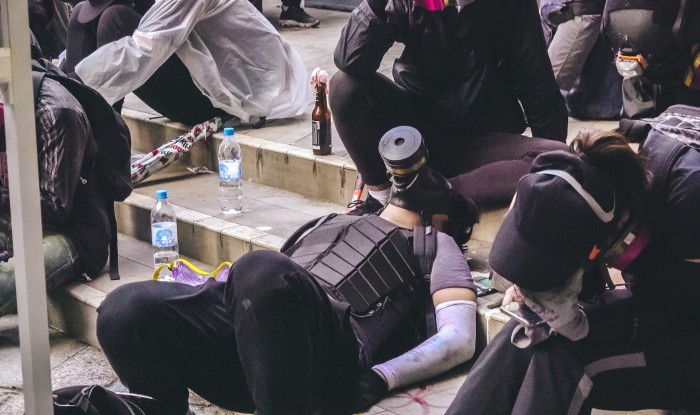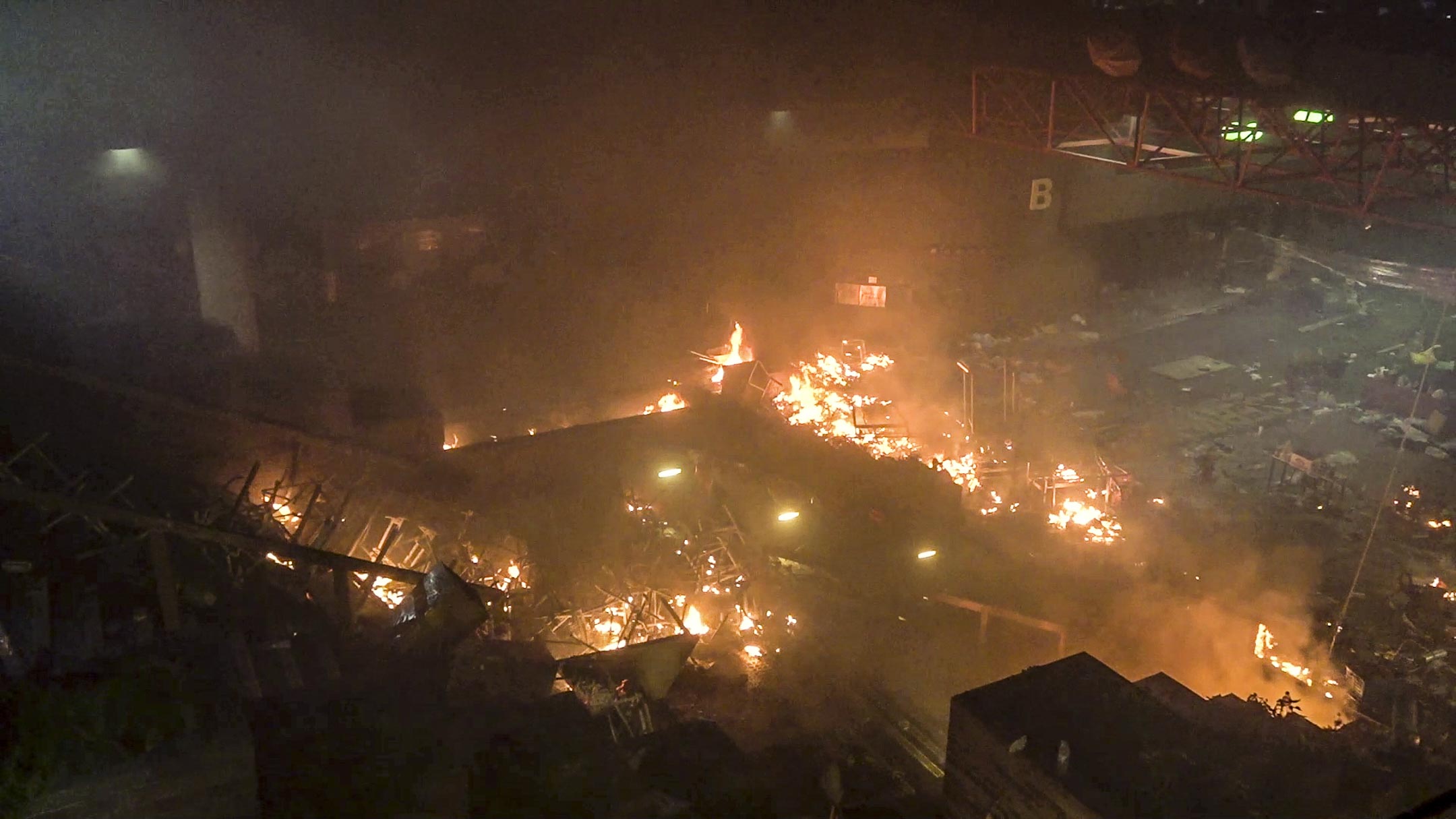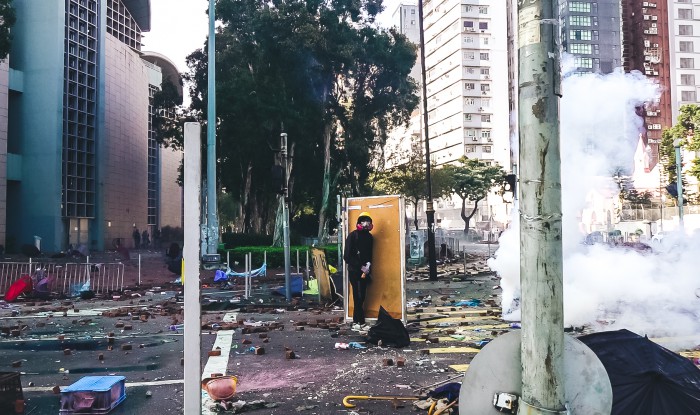by Brian Hioe
語言:
English
Photo Credit: Film Poster
INSIDE THE RED BRICK WALL examines one of the climactic moments of the protests that broke out in Hong Kong in 2019, the siege of the Polytechnic University of Hong Kong (PolyU) by the Hong Kong police. The summer 2019 Hong Kong protests originally broke out against an extradition bill that the Hong Kong government intended to pass, which would have made it possible to extradite criminal suspects to China; it was feared that the bill would be used as a means of silencing political dissent in Hong Kong.
Produced by the Hong Kong Documentary Filmmakers’ Union, the film proves a fitting companion piece to Taking Back the Legislature, which documents the abortive attempt to occupy the Hong Kong legislature on July 1st, 2019. However, while Taking Back the Legislature depicts the attempt to storm and occupy a building, Inside the Red Brick Wall shows protesters under siege in PolyU.

Film Still
Surrounded by police and waded in on all sides, protesters make numerous attempts to breach police lines and escape outside. As they do so, they grapple with the fact that it will prove highly difficult to extricate all of those in the university, such as the wounded, or civilians that have become waded in with protesters in PolyU. Arriving at collective decision-making proves difficult, with no clear tactical solutions about how to break through police lines, and constant debate about whether new attempts should be made to escape the university, and about the strategy of attrition adopted by police toward demonstrators.
With the siege going on for days, the film highlights aspects of the daily life of occupiers within PolyU. Interactions with police include protesters and police broadcasting music at each other or exchanging insults through loudspeaker, or otherwise attempting to reason with police about their use of violence against civilians. Similarly, the film makers interview several protesters, who speak candidly of their fear of arrest, injury, or death—with it believed by many protesters that the Hong Kong police have killed or sexually assaulted some of those that they have arrested.

Film Still
What the film most ably captures is the constant back-and-forth between protesters about tactical considerations. Although protesters generally realize that they are all on the same side— accusations against some individuals of being undercover police notwithstanding—debate about what to do is increasingly heated as the occupation drags on. With many protesters having slept little over the course of several days, their frustration is increasingly palpable, as PolyU more and more resembles a war zone under constant police fire.
This back-and-forth between protesters extends to whether to surrender to police or not, when this appears to be the only way out of the campus. This is felt most acutely when a group of secondary school principals enter the campus, stating that they have negotiated to allow students who register their IDs with police to leave. A particularly powerful moment shows a student wavering over whether to stay or leave, as those that leave are berated by other protesters. Though the film also touches upon some of the other moments of high drama that took place during the PolyU siege, such as students rappelling down a rope to escape to waiting motorcycles, or leaving through the university’s sewer system, it is these moments of internal struggle that are among the most powerful moments of the film.

Film Still
Indeed, perhaps what the siege of PolyU evidences is the means in which Hong Kong is itself under siege, with PolyU serving as a metaphor for the city writ large. It is increasingly a dilemma for activists as to whether they stay or leave Hong Kong, if they are able to leave Hong Kong to begin with. Much as the students in PolyU were under constant siege by police, this perhaps resembles how the space for political freedoms in Hong Kong is continually shrinking, with frequent reports of new arrests or new jail sentences handed down to activists. And, as this space shrinks, one can expect increasingly intense infighting among the Hong Kong activists that remain, much as conflicts between the PolyU occupiers became increasingly intense as the siege by police went on.
Inside the Brick Wall—a film that can no longer safely be safely screened in Hong Kong—will no doubt prove a worthy historical document of the Hong Kong protests. Not only does the film document a key moment in the protests, but it proves a film encapsulating the dynamics of the protest in microcosm—and the subjective struggle faced by Hongkongers as a whole today.



